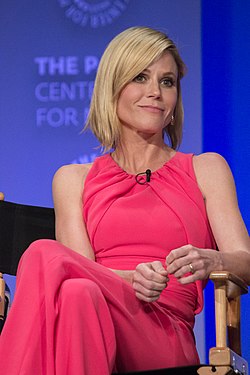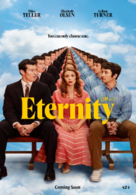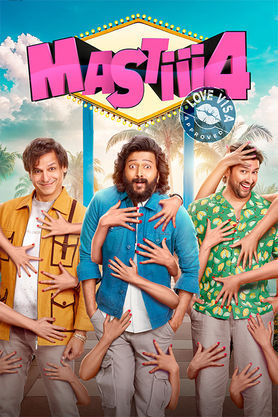Happy Gilmore 2


After winning the Tour Championship, Happy Gilmore faces new challenges in the golf world. As he navigates fame and pressure, he learns valuable lessons about friendship and perseverance. With the support of his friends, Happy must find balance and stay true to his quirky, passionate self on and off the course.
July 25
2025
Release Date
English
Language
54 minutes
1 hour
Running Time
Available on
Cast




Adam Sandler


Julie Bowen


Christopher McDonald


Benny Safdie


Ben Stiller


Bad Bunny


Haley Joel Osment


Lavell Crawford




Jackie Sandler




Sadie Sandler


Maxwell Friedman


Steve Buscemi







John Daly







Dennis Dugan







Sunny Sandler







Philip Schneider







Ethan Cutkosky







Conor Sherry
2.5
Average Rating
The above-mentioned average rating is based on the derived ratings of multiple review platforms
OH Review


Happy Gilmore 2 Movie Review
Plot
Happy Gilmore 2 dives into the life of Happy Gilmore, played once again by Adam Sandler, who has transitioned from the quirky, bombastic character we once knew to a more somber version of himself. The film kicks off on a rather gloomy note, showcasing Happy as a widower trying to raise four rambunctious sons and a single daughter, Vienna, portrayed by Sunny Sandler. This shift in narrative tone signals a drastic departure from the lightheartedness of the original film, which was released in 1996. The new plot introduces a dire situation where Happy faces financial struggles that are tied to ensuring his daughter can attend dance school. To make matters worse, he is confronted by an arrogant millionaire named Frank Manatee, enacted by Benny Safdie, who is looking to start a rival golf league. This new league threatens the very fabric of the sport that Happy unexpectedly grew to love.
The storyline attempts to weave a narrative filled with dark comedy as we watch Happy grapple with his reality—sinking into alcoholism, battling his inner demons, and reminiscing about his glory days on the golf course. Throughout the film, familiar faces from the original resurface, such as Shooter McGavin, portrayed by Christopher McDonald, though this time he finds himself in a mental asylum rather than battling on the greens. This gives a layer of complexity to the plot, as it tries to explore the consequences of fame and the price that comes with it.
While it explores themes of nostalgia and the challenges of adulthood, “Happy Gilmore 2” struggles to find its footing in conveying both a coherent narrative and the comedic elements that originally made the 1996 film a hit. The inclusion of flashbacks serves as an attempt to trigger fond memories for those who adored the first film, but they often interrupt the pacing and flow of the current storyline. Instead of providing engaging humor, the film's long runtime becomes burdened by an excess of cameos that weigh it down, often feeling more like a parade of famous faces rather than an integral part of the story.
The climactic tournament promised in the premise ultimately fails to deliver the nail-biting excitement that fans might expect, leading to a lackluster conclusion. Overall, the plot of Happy Gilmore 2 feels like a blend of potentially touching moments overshadowed by an uneven humor and an overarching sense of mediocrity that leaves viewers wanting more.
Acting
In Happy Gilmore 2, Adam Sandler steps into the worn-out shoes of Happy Gilmore once again, yet this portrayal comes nearly three decades later. Now aged 58, he embodies a version of Happy that has matured but lacks the youthful exuberance that audiences fell in love with in the first film. While his performance exhibits depth and character exploration, it sadly doesn’t tap into the raw, infectious humor that marked his earlier work. The more restrained Happy appears to be a more stretched-out version of himself, relying heavily on previous audience goodwill rather than crafting fresh laughter.
One of the noticeable shortcomings of the film is the wasted potential of its ensemble cast. While actors like Julie Bowen return to reprise their roles, her character serves little purpose and feels lackluster in this sequel. In contrast, Christopher McDonald’s Shooter McGavin remains a highlight, showcasing his comedic talents even from the confines of a mental asylum. Similarly, Ben Stiller returns as Hal L. from the first film, and his antics elicit laughter, contributing to the sense of familiarity.
The standout performance comes unexpectedly from Benito Antonio Martinez Ocasio, better known as Bad Bunny, who plays Happy's caddy, Oscar. His portrayal injects a fresh spark into the film, notably through his amusing rivalry with Travis Kelce’s character. Their comedic exchanges bring levity to an otherwise heavy storyline. The large ensemble cast does have its moments, with Benny Safdie’s character playing an arrogant instigator adding tension, yet overall, the film struggles to cohesion, leading to disjointed performances across the board.
Although the acting showcases a reliable level of talent, the chemistry varies greatly throughout the film. Sandler's comedic style, paired with his chemistry—or lack thereof— with the rest of the cast does not reach the heights of the original, making it a subdued experience. Therefore, while there are notable moments, the acting fails to elevate the film, leaving a sense of longing for how the original did it better.
Cinematography
The cinematography of Happy Gilmore 2, directed by Kyle Newacheck, reflects the typical bright and vibrant visual aesthetics expected from a comedy, particularly one set in the world of golf. However, given the darker themes embedded in the film’s narrative, it’s striking how the visuals remain primarily upbeat, rather than believably mirroring the emotional tones of the story. The film is filled with sweeping shots of golf courses, sunlit fairways, and vibrant greens that are synonymous with the sport, all intended to evoke nostalgia.
Nevertheless, while the cinematography feels visually engaging, it does not offer anything particularly innovative or outside the norm for a comedy sequel. The use of flashbacks from the original film, while attempting to spark nostalgic memories, comes off as poorly integrated rather than skillfully woven into the narrative, causing a disconnection rather than a heartfelt reunion with the story.
Additionally, the tournament scenes, which should have been action-packed and exhilarating, tend to lack dynamism, diminishing the stakes established throughout the film. With much of the golf shots lacking tension, the promise of a climactic event falls flat, and it doesn’t translate to the type of edge-of-your-seat excitement that one would expect from a sports comedy. Coupled with the lingering feeling of missed opportunities due to uneven pacing, the cinematography sadly fails to save the film from its narrative shortcomings.
Overall, while the cinematography does accomplish an appealing superficial charm, it ends up being a missed opportunity that mirrors the film itself—delightfully nostalgic yet ultimately lacking in substantial depth. Instead of complementing the story's emotional arcs, the visual elements settle into comfortable patterns that prevent true engagement with the audience. In the end, Happy Gilmore 2 riding its nostalgia wave could certainly benefit from a more substantial visual storytelling approach, especially considering its stronger predecessor.
Direction
Directed by Kyle Newacheck, Happy Gilmore 2 faces the daunting task of delivering a sequel to a beloved film that defined a generation of comedies. Newacheck, known for his work on Workaholics, is no stranger to humor, but directing a sequel with such lofty expectations proves to be a challenge. The overall direction of the film feels unfocused, as it oscillates between attempting to capture the emotional weight of Happy's new life and delivering the slapstick humor that is Sandler’s trademark style. This dichotomy creates a film tongue-tied between comedy and earnestness.
The pacing suffers notably in the early acts as the narrative tries to cram in flashbacks, introductions of characters, and an ensemble of cameos. Rather than weaving these elements into a tightly knit story, Newacheck often allows them to derail the main plot. The film quickly becomes bogged down, sacrificing crucial story development for half-hearted comedic interludes. The chaotic structure may fail to appeal to newer viewers, while nostalgia-ridden callbacks will likely leave original fans somewhat disillusioned.
Ultimately, Newacheck's interpretation of “Happy Gilmore 2,” while undoubtedly filled with moments of nostalgic love, struggles to forge its own identity rather than solely relying on the charm of the original. The film’s attempts at maturity often come across as heavy-handed, failing to balance the levity that fans expect with the darker undertones of Happy’s new reality. As a result, what could have been a poignant exploration of growth ultimately feels repetitive and formulaic.
In hindsight, while Kyle Newacheck showcases some ability in directing comedic moments, the overall execution leaves much to be desired. “Happy Gilmore 2” serves as a reminder of the risks associated with sequels—especially for ones that seek to recapture the magic of their predecessors. In providing a nostalgic experience, the film doesn't offer a fresh perspective, instead delivering a familiar ride that hits the same notes but ultimately falls short of emotionally resonating with the audience.
Conclusion
In conclusion, Happy Gilmore 2 serves as a nostalgia-laden trip down memory lane, but unfortunately, it fails to capture the genuine humor and charm of the original film. While Adam Sandler's portrayal of an older Happy Gilmore contains moments of insight and emotional depth, it largely feels like a feeble attempt to replicate the iconic character we once adored. The darker storyline, centered around loss and maturity, is overshadowed by reliance on cameos and inside jokes that may only resonate with long-time fans.
The film's plot, while ambitious in attempting to intertwine themes of family and legacy, is weighed down by its pacing and disjointed narrative. Every flashback or cameo diverts attention from what could have unfolded as a coherent and engaging story. Instead of generating gut-busting laughs, the movie often stumbles, becoming a mere shadow of the vibrant energy that marked its predecessor.
While there are brief glimmers of promise—especially from standout performers like Bad Bunny and Christopher McDonald—these moments are few and far between, lost amongst a sea of missed comedic opportunities and an extensive ensemble cast that feels underutilized. The cinematography captures the aesthetics of the golf world but lacks the innovative edge that could have enhanced the film’s storytelling.
In the end, Happy Gilmore 2 feels rooted in nostalgia yet unable to elevate itself beyond the legacy of its original. It reflects a somewhat melancholic reality: the nostalgia chase can lead to fleeting and superficial satisfaction, lacking the heart that once made the character and story so relatable. For die-hard fans, the return to this comedic universe may still be worth a watch; however, new viewers, much like our beloved Happy, might find more joy in unexpected ventures than in a repetitious revisit. Overall, it was a missed opportunity that leaves a lingering sense of disappointment, proving that sometimes it’s better to leave the past untouched.
Share this review
The Great Reviews
Times Now
Sonal Pandya
More like this
Zootopia 2
In Zootopia 2, brave rabbit cop Judy Hopps and clever fox Nick Wilde reunite to solve their toughest case yet. As they navigate twists and turns in a mysteri...


